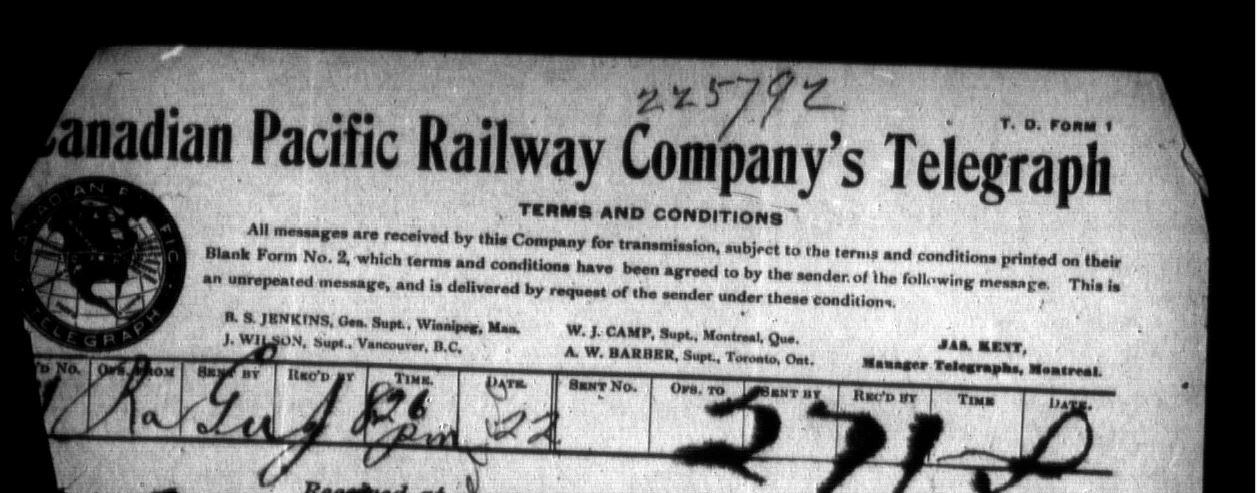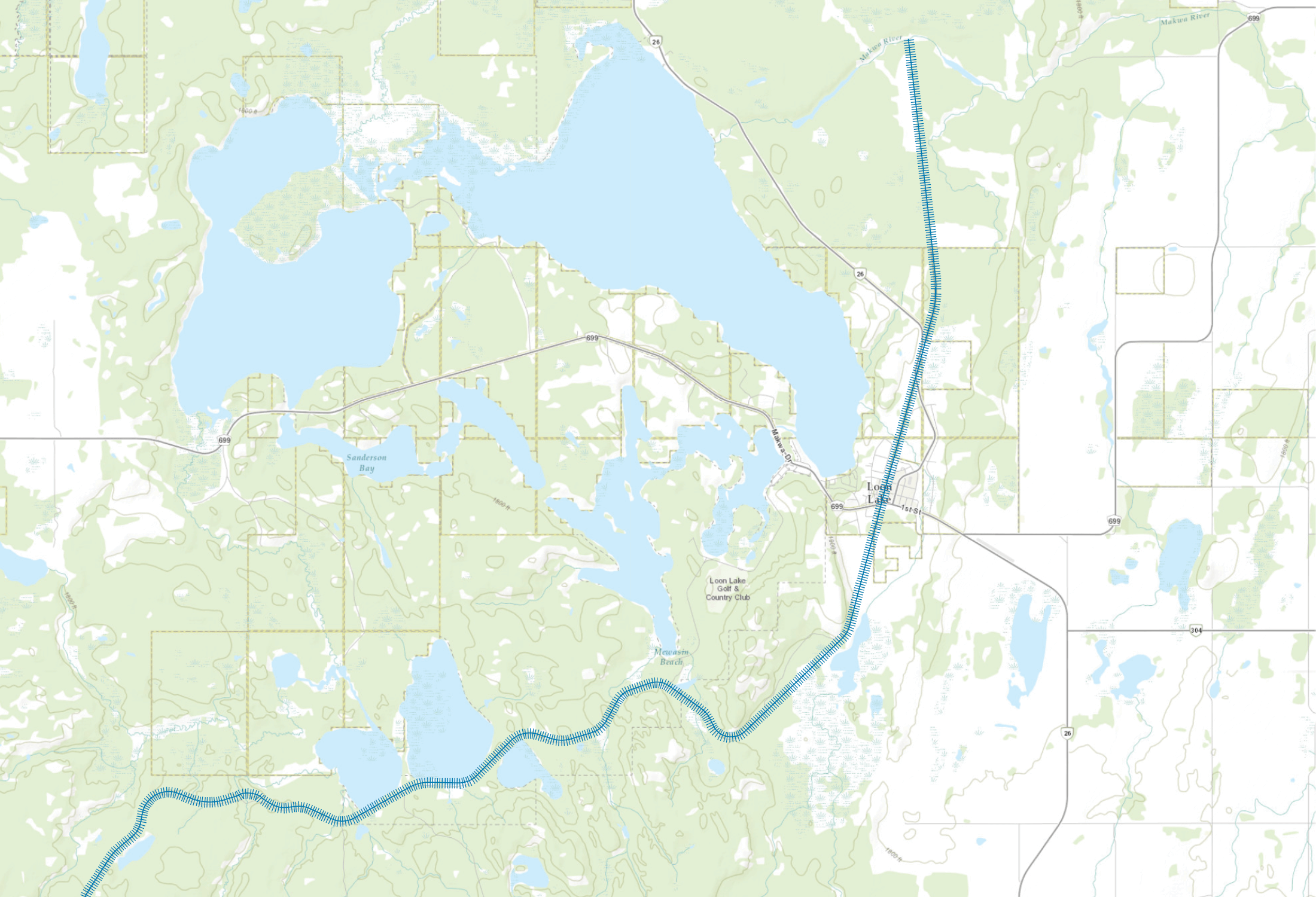The Railroad

The building of railways across Canada allowed Canada to build their nation on the lands they stole from First Nations. Railways brought goods and services. And it brought more settlers and towns.
In 1913, a railway company asked Canada to send maps of the Loon Lake area. It was rumored they wanted to put a railway through our area.
For moniyawak, living near a railway was a very big advantage. Towns and services went alongside railways and land values increased if you lived near a railway station. As early as 1912, white squatters started to move into our area thinking the railway was going to be built. They were squatting on lands Canada knew Makwa Sahgaiehcan would need for our reserve, but Canada did nothing to stop them from squatting on our land.
The railway was never built.
In 1929, another railway company, Canadian National Railway, decided it wanted to build a railway from St. Walburg, Saskatchewan to Bonnyville, Alberta. For over a year, they looked at different routes the railway would take. As a result, even more squatters moved in, thinking they should settle near the planned railway.
It went right through our reserve.

Treaty 6 guaranteed no moniyawak would live on our reserve. Of course, that turned out to be a lie. Canada’s laws said if Canada wanted land to make a town, Canada needed to obtain majority consent of the Band before they took land. But if Canada decided reserve land was needed for railways, they could take the land without talking to the Band and just compensate them later.
When the railway company decided that the railway would go through our reserve in 1930, under Canadian law, they did not need to ask permission of Makwa Sahgaiehcan First Nation or get our consent. The railway company only needed to compensate Makwa Sahgaiehcan at a later date. They didn’t even do this properly.
The railway company only paid $305.56 for the land they took from us, or about $5,496 in today’s money. In total, 46.67 acres of land was taken from our reserve for the railway.
